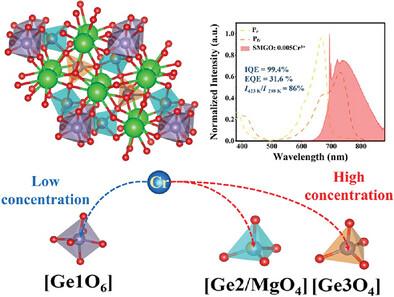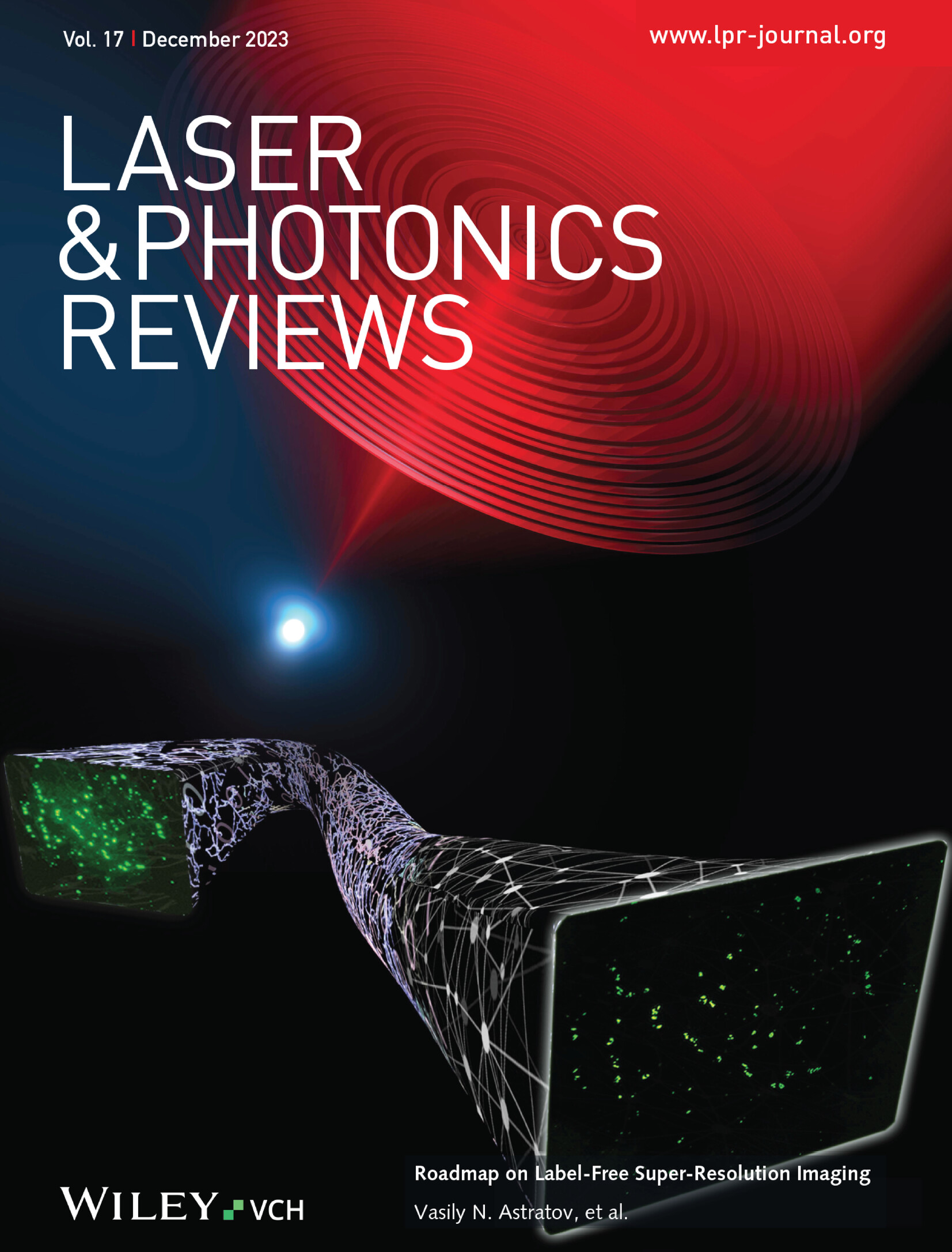Near-Unity Internal Quantum Efficiency and High Thermal Stability of Sr3MgGe5O14: Cr3+ Phosphor for Plant Growth
IF 9.8
1区 物理与天体物理
Q1 OPTICS
引用次数: 0
Abstract
Near-infrared phosphor-converted light-emitting diodes (NIR pc-LEDs) are regarded one of the most promising light sources for food analysis, plant growth, bioimaging, night vision, and so on. Cr3+-activated NIR phosphors have garnered increasing attention due to their exceptional photoluminescence properties for NIR pc-LED. However, most of them suffer from poor thermal stability or low efficiency which limits their large-scale application. Herein, a novel Sr3MgGe5O14: Cr3+ (SMGO: Cr3+) NIR phosphor is presented, which exhibits a broadband NIR emission ranging the range of 650–1000 nm with a peak at 735 nm. SMGO: 0.005Cr3+ phosphor demonstrates an almost near-unity internal quantum efficiency (99.4%) and excellent thermal quenching performance (I423 K/I298 K = 86%). First-principles theory calculation indicates that Cr3+ ions preferentially occupy the [Ge2/MgO4] and [Ge3O4] sites at high doping concentration within the SMGO host, illustrating the concentration quenching mechanism. Furthermore, a NIR pc-LED is manufactured by utilizing SMGO: 0.005Cr3+ with a 445 nm blue LED chip, and the NIR output power is 140.5 mW with a photoelectric conversion efficiency of 15.5% at 300 mA. Potential applications of plant growth and the detection of several mental ions are also demonstrated, which demostrates its promising application in plant growth.

近红外荧光粉转换发光二极管(NIR pc-LED)被认为是食品分析、植物生长、生物成像、夜视等领域最有前途的光源之一。由于 Cr3+ 激活的近红外荧光粉在近红外 pc-LED 中具有优异的光致发光特性,因此受到越来越多的关注。然而,它们大多热稳定性差或效率低,限制了其大规模应用。本文介绍了一种新型 Sr3MgGe5O14: Cr3+ (SMGO: Cr3+)近红外荧光粉,它能在 650-1000 纳米范围内发出宽带近红外辐射,峰值在 735 纳米。SMGO: 0.005Cr3+ 荧光粉的内部量子效率几乎接近统一(99.4%),热淬灭性能优异(I423 K/I298 K = 86%)。第一原理理论计算表明,Cr3+ 离子在 SMGO 主体内高掺杂浓度时优先占据 [Ge2/MgO4] 和 [Ge3O4] 位点,说明了浓度淬灭机制。此外,利用 SMGO:0.005Cr3+ 和 445 纳米蓝光 LED 芯片制造了近红外 pc-LED,在 300 mA 电流下,近红外输出功率为 140.5 mW,光电转换效率为 15.5%。此外,还展示了植物生长和几种精神离子检测的潜在应用,证明了其在植物生长方面的应用前景。
本文章由计算机程序翻译,如有差异,请以英文原文为准。
求助全文
约1分钟内获得全文
求助全文
来源期刊
CiteScore
14.20
自引率
5.50%
发文量
314
审稿时长
2 months
期刊介绍:
Laser & Photonics Reviews is a reputable journal that publishes high-quality Reviews, original Research Articles, and Perspectives in the field of photonics and optics. It covers both theoretical and experimental aspects, including recent groundbreaking research, specific advancements, and innovative applications.
As evidence of its impact and recognition, Laser & Photonics Reviews boasts a remarkable 2022 Impact Factor of 11.0, according to the Journal Citation Reports from Clarivate Analytics (2023). Moreover, it holds impressive rankings in the InCites Journal Citation Reports: in 2021, it was ranked 6th out of 101 in the field of Optics, 15th out of 161 in Applied Physics, and 12th out of 69 in Condensed Matter Physics.
The journal uses the ISSN numbers 1863-8880 for print and 1863-8899 for online publications.

 求助内容:
求助内容: 应助结果提醒方式:
应助结果提醒方式:


